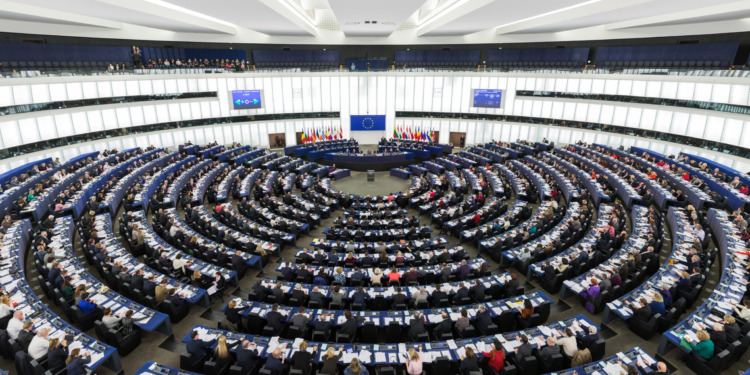On April 18, the European Parliament voted to approve a combination of policies as part of the “Fit for 55” package; a legislation facilitating the transition to a greener economy, which will prepare the European Union (EU) to achieve its European Green Deal target of reducing emissions by 55% by 2030 (compared to 1990 levels) to become climate-neutral by 2050.
The series of legislative proposals and amendments included within the EU’s Fit for 55 will target different sectors of the industry such as transportation, emissions trading, energy production and fossil fuel usage, and are aimed at helping the EU to scale up renewable energy and energy efficiency measures.
Yesterday the @Europarl_EN passed crucial climate laws that are part of the #Fitfor55 package to reach the 2030 target. This vote puts the
firmly on the path to a more sustainable future!
Now, @EUCouncil has to formally endorse the texts.Find the reforms in detail below
pic.twitter.com/LLS1yjX8jC
— Sustainable Value Hub (@Sustainable_vh) April 19, 2023
The final vote that took place on Tuesday focused on three key files within the Fit for 55 package in particular: The Carbon Border Adjustment Mechanism (CBAM), the Social Climate Fund (SCF) and the EU Emissions Trading Scheme (EU ETS).
This was the penultimate step for these three policies within the Fit for 55, as it now has to be formally ratified by the EU Council.
The vote concludes two years of negotiations between the European Parliament, the European Council and the European Commission.
Carbon Border Adjustment Mechanism
The new Carbon border adjustment mechanism will target the unfair advantage that producers have in many countries outside of the EU that are not subject to limiting climate regulations. This will take the form of a climate border tax, the first of its kind.
The tax will ensure that imported products will not have an unfair advantage over domestic producers and will simultaneously reduce the ensuing carbon leakage.
Under the new system, producers who import carbon-intensive products into the EU will be required to purchase permits. These permits will account for the disparity between their domestic carbon pricing and the pricing that EU producers are faced with.
Currently, a single ton of carbon on the EU Emissions Trading System (ETS) costs slightly more than €87. Conversely, countries such as the US do not have a national carbon price.
The new system will directly target iron, steel, cement, aluminium, electricity, fertilisers and hydrogen. Hydrogen is an important addition, as many countries rely on “grey hydrogen;” a type of hydrogen produced from natural gas through a process called steam methane reforming, which releases a lot of greenhouse gases (GHGs).
The new system will also account for the indirect CO2 emissions linked to the consumption of fossil fuels. This is arguably one of the biggest wins for the European Parliament, as they had long fought for this key aspect of the policy.
Related Articles: Climate Change Game-Changers: The Laws That Shaped the Landscape | G7 Meeting on Climate and Energy in Japan: Will the World Now Pivot to Solar and Wind? | Plastic Waste Is Creating New Communities on the Ocean’s Surface
Some campaigners have raised concerns that the tax may adversely affect poor countries.
The charity Oxfam addressed the issue in a statement:
“Europeans are responsible for double the carbon emissions as the poorest half of the world. Yet, the EU just agreed to pass the buck to those least responsible by forcing them to pay a tariff despite being hardest hit by the climate crisis. EU countries did not even accept to channel revenues to climate finance funds. The EU and EU countries need to increase climate finance funds, especially now that poor countries are going to bear the cost of the carbon tariff.”
The Social Climate Fund
The social climate fund will compensate lower income groups when a new tax against using fossil fuels in cars and home heating is implemented.
With Europe’s upcoming carbon tax on fossil-fueled powered cars and buildings, the Social Climate Fund will aim to prevent deepening social inequalities stemming from the tax.
The European Parliament estimates that the additional costs will amount to 10 cents per litre of fuel until 2030. The tax is supposed to act as an incentive for people to switch to electric vehicles and public transport and to insulate their houses better.
The Social Climate Fund totals €86.7 billion and will help individual governments allocate money to vulnerable citizens. The fund will be made available from 2026 as a preemptive measure to the tax that will be enacted in 2027.
The fund has, however, faced criticism for not prioritising the poorest individuals and instead being utilised to gain support from EU governments that were initially opposed to the new regulations.
EU Emission Trading System
The last measure voted on is a revision of the EU Emission Trading System (EU ETS). The price of carbon dioxide emissions is determined by the EU ETS, which also sets yearly limits on emissions from certain economic sectors.
The EU ETS is a cap-and-trade system created to reduce greenhouse gas emissions in a cost-effective way by limiting the total amount of GHG a producer can emit. The EU ETS covers various industries such as power and heat generation, energy-intensive industries, and aviation.
The European Parliament has voted to decrease the overall emission cap even further and increase the rate of annual emission reductions.
Furthermore, there are plans to gradually eliminate free emission allowances for aviation and to align with the global carbon offsetting and reduction mechanism for international aviation (CORSIA). For the first time, shipping emissions will also be incorporated into the EU ETS.
By 2030, power generators and heavy polluters will be required to reduce their pollution by 62% because of the regulations.
Having passed the European Parliament, Fit for 55 only needs the approval of the European Council to be enacted. If so, it will mark a big step towards the EU’s Green Deal goals.
Editor’s Note: The opinions expressed here by the authors are their own, not those of Impakter.com — In the Featured Photo: The European Parliament in Strasbourg. Featured Photo Credit: Wikimedia Commons.











